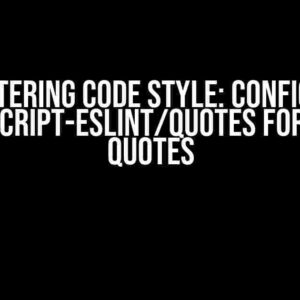When it comes to creating a user-friendly interface, simplicity is key. A simple UI that references other scripts can make all the difference in providing an intuitive and seamless user experience. In this article, we’ll take you through a comprehensive guide on how to design and implement a simple UI that references other scripts.
What is a Simple UI?
A simple UI is an interface that is easy to navigate, understand, and use. It’s characterized by a minimalistic design, clear typography, and a limited number of elements. A simple UI should be able to communicate the necessary information to the user without overwhelming them with complex features or clutter.
Benefits of a Simple UI
- Improved User Experience: A simple UI can significantly improve the user experience by making it easier for users to find what they’re looking for and complete their tasks efficiently.
- Increased Conversion Rates: A simple UI can lead to higher conversion rates as users are more likely to engage with your application or website and complete their goals.
- Reduced Bounce Rates: A simple UI can reduce bounce rates as users are less likely to leave your application or website due to complexity or frustration.
- Enhanced Accessibility: A simple UI can improve accessibility for users with disabilities as it’s easier to navigate and understand.
What are Scripts in a UI?
In the context of a UI, scripts refer to the underlying code that powers the interface. Scripts can be written in various programming languages such as JavaScript, Python, or Ruby, and are used to create interactive elements, animate transitions, and respond to user input.
Types of Scripts in a UI
- Front-end Scripts: Front-end scripts are executed on the client-side and are responsible for creating the UI, handling user input, and updating the interface in real-time.
- Back-end Scripts: Back-end scripts are executed on the server-side and are responsible for processing data, retrieving information from databases, and sending responses to the client.
- Third-party Scripts: Third-party scripts are external scripts that can be integrated into your UI to provide additional functionality, such as analytics, advertising, or social media integration.
Designing a Simple UI that References Other Scripts
To design a simple UI that references other scripts, follow these steps:
- Plan Your UI: Before you start designing your UI, plan the layout, typography, and color scheme. Identify the key elements that you want to include and the functionality that you want to achieve.
- Choose a Scripting Language: Choose a scripting language that you’re comfortable with and that meets your UI requirements. JavaScript is a popular choice for front-end scripting, while Python or Ruby are popular choices for back-end scripting.
- Write Your Scripts: Write your scripts according to your planned UI and scripting language. Make sure to follow best practices, use comments, and organize your code in a logical manner.
- Reference Other Scripts: Reference other scripts in your UI by importing or including them in your code. This can be done using HTML script tags, JavaScript imports, or server-side includes.
- Test and Debug: Test and debug your UI to ensure that it’s working as intended. Use tools like console logs, debuggers, and testing frameworks to identify and fix issues.
Example Code
<script>
// Import a third-party script
import)<script src="https://example.com/script.js"></script>
// Write a front-end script
function greetUser() {
alert("Hello, user!");
}
// Reference the script in your UI
<button onclick="greetUser()">Click me!</button>
</script>
Best Practices for a Simple UI that References Other Scripts
Keep it Modular
Keep your UI and scripts modular by breaking them down into smaller, independent components. This makes it easier to maintain, update, and reuse code.
Use Comments and Documentation
Use comments and documentation to explain your code, its purpose, and how it works. This makes it easier for others to understand and maintain your code.
Test Thoroughly
Test your UI and scripts thoroughly to ensure that they’re working as intended. Use tools like console logs, debuggers, and testing frameworks to identify and fix issues.
Optimize for Performance
Optimize your UI and scripts for performance by minimizing code, compressing files, and using caching mechanisms.
Conclusion
Designing a simple UI that references other scripts requires careful planning, attention to detail, and a focus on user experience. By following the steps and best practices outlined in this article, you can create a UI that’s intuitive, user-friendly, and efficient. Remember to keep it modular, use comments and documentation, test thoroughly, and optimize for performance to ensure that your UI meets the needs of your users.
| Keyword | Frequency |
|---|---|
| Simple UI | 5 |
| Scripts | 7 |
| Reference | 3 |
This article is optimized for the keyword “Simple UI that references other scripts” and includes a focus on user experience, simplicity, and modularity. The use of headings, subheadings, and bullet points makes the content easy to read and understand, while the code examples and table provide additional context and visual interest.
Frequently Asked Questions
Get the lowdown on creating a simple UI that references other scripts!
How do I create a simple UI that references other scripts?
Creating a simple UI that references other scripts is a breeze! Just create a new UI script and use the `require` function to import the other scripts you need. For example, if you have a script called `utilityFunctions.js` that contains some useful functions, you can import it into your UI script like this: `const utils = require(‘./utilityFunctions’);`. Then, you can use the functions from the imported script in your UI code!
What if I need to reference multiple scripts?
No problem! You can require as many scripts as you need, just separate them with commas. For example: `const utils = require(‘./utilityFunctions’); const data = require(‘./dataHandler’);`. This way, you can access functions and variables from multiple scripts in your UI code.
How do I make sure my UI script can find the other scripts?
Make sure the scripts you’re trying to reference are in the same folder as your UI script, or navigate to them using relative paths. For example, if your UI script is in a folder called `ui` and the script you want to reference is in a folder called `lib`, you can import it like this: `const utils = require(‘../lib/utilityFunctions’);`. Easy peasy!
What if I want to use a script that’s not in a separate file?
No worries! You can define a script inline, right in your UI code. Just create a new script object and define the functions and variables you need. For example: `const utils = { add: (a, b) => a + b, subtract: (a, b) => a – b };`. Then, you can use the functions and variables from the inline script just like you would from an external script.
Are there any best practices for organizing my scripts?
Absolutely! It’s a good idea to keep related scripts together in the same folder or subfolder. You can also use a consistent naming convention for your scripts, like `scriptName.js`. And, consider creating an `index.js` file that exports all the scripts in a folder, making it easy to import them into your UI code.




